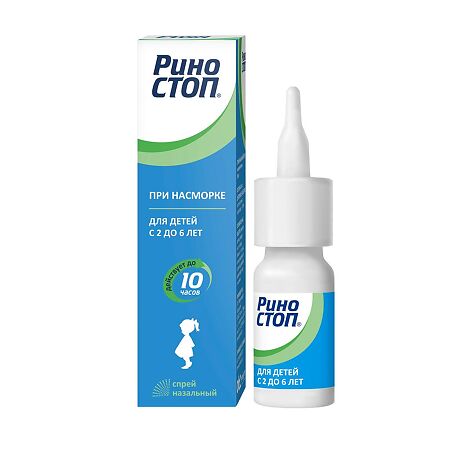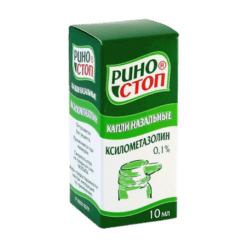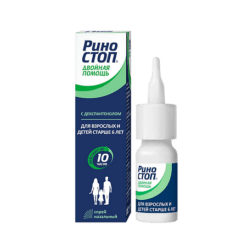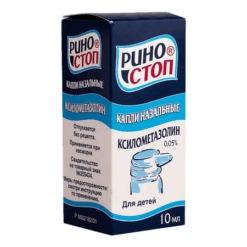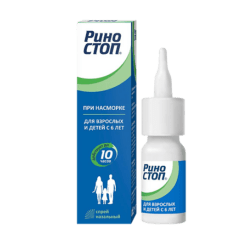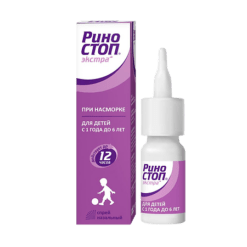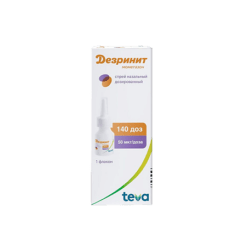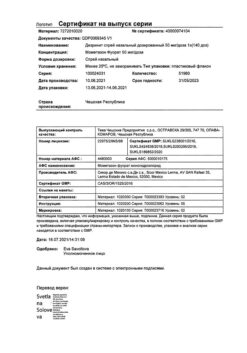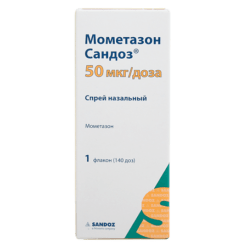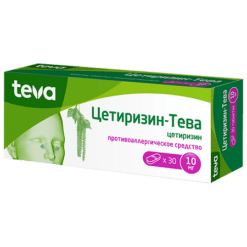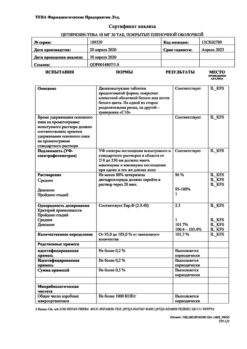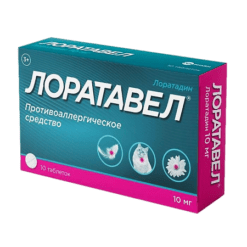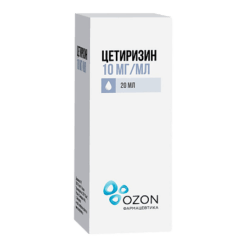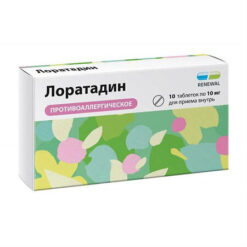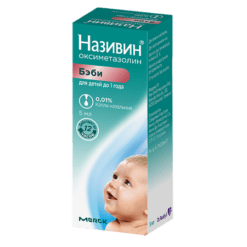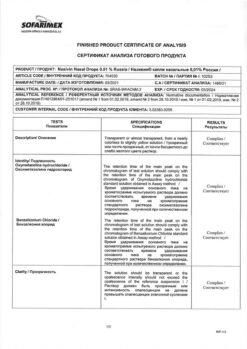No products in the cart.
Rhinostop, 0.05% spray 15 ml
€3.76 €3.42
Description
Pharmacotherapeutic group: anticonvulsant – alpha-adrenomimetic
ATX code: R01AA07
Pharmacological properties
Xylometazoline belongs to the group of local vasoconstrictors (decongestants) with alpha-adrenomimetic activity, causes contraction of the blood vessels of the nasal mucosa, thus eliminating edema and hyperemia of the nasal mucosa, restores nasal passageway, facilitates nasal breathing.
The action of the drug starts within a few minutes after its application and lasts up to 10 hours.
Pharmacokinetics
When applied topically the drug is practically not absorbed, so its concentration in the blood plasma is very low (not determined by modern analytical methods).
Indications
Indications
Used for acute respiratory diseases with symptoms of rhinitis (runny nose), acute allergic rhinitis, sinusitis, eustachitis, hay fever, and otitis media (to reduce swelling of the nasopharyngeal mucosa).
Preparing the patient for diagnostic manipulations in the nasal passages.
Pharmacological effect
Pharmacological effect
Pharmacotherapeutic group: anticongestive agent – alpha-adrenergic agonist
ATX code: R01AA07
Pharmacological properties
Xylometazoline belongs to the group of local vasoconstrictors (decongestants) with alpha-adrenomimetic activity, causes a narrowing of the blood vessels of the nasal mucosa, thus eliminating swelling and hyperemia of the nasal mucosa, restores the patency of the nasal passages, and facilitates nasal breathing.
The effect of the drug begins a few minutes after its use and lasts up to 10 hours.
Pharmacokinetics
When applied topically, the drug is practically not absorbed, so its concentration in the blood plasma is very low (not determined by modern analytical methods).
Special instructions
Special instructions
Should not be used for a long time (more than 7 days), for example, for chronic rhinitis.
Avoid contact of the drug with the eyes (the drug affects vision).
With prolonged use (more than one week), symptoms of nasal congestion may recur.
Impact on the ability to drive vehicles and machinery
In case of development
systemic side effects (headache, palpitations, increased
blood pressure, visual impairment) it is necessary to refrain from administering
vehicles and other potentially hazardous activities
activities that require increased concentration and speed
psychomotor reactions.
Active ingredient
Active ingredient
Xylometazoline
Composition
Composition
Composition per 1 ml:
active ingredient:
xylometazoline hydrochloride – 0.50 mg or 1.00 mg;
excipients:
disodium edetate dihydrate – 0.50 mg,
sodium chloride – 9.00 mg,
benzalkonium chloride – 0.15 mg,
potassium dihydrogen phosphate -3.63 mg,
sodium hydrogen phosphate dodecahydrate – 7.13 mg,
purified water – up to 1 ml.
Pregnancy
Pregnancy
During pregnancy, the use of the drug is contraindicated.
During infancy
feeding, the drug should be used only as prescribed by a doctor, after
careful assessment of the risk-benefit ratio for mother and child. Not
It is allowed to exceed the recommended dosage.
Contraindications
Contraindications
Hypersensitivity to xylometazoline and other components of the drug, arterial hypertension, tachycardia, severe atherosclerosis, glaucoma, atrophic rhinitis, hyperthyroidism, inflammatory diseases of the skin of the nasal vestibule, surgical interventions on the meninges (in history), conditions after transsphenoidal hypophysectomy, children’s age (up to 2 years – for 0.05% spray, up to 6 years for 0.1% spray), pregnancy.
It should not be used simultaneously with monoamine oxidase inhibitors (MAOIs), tetra- and tricyclic antidepressants, other local vasoconstrictors (decongestants), as well as drugs that increase blood pressure. When used simultaneously with MAO inhibitors or within 14 days after stopping their use, an increase in blood pressure and heart rhythm disturbances may occur.
With caution
Diabetes mellitus, porphyria, pheochromocytoma, diseases of the cardiovascular system (including coronary heart disease), prostatic hyperplasia, breastfeeding period. Hypersensitivity to adrenergic drugs, accompanied by insomnia, dizziness, arrhythmia, tremor, increased blood pressure.
Side Effects
Side Effects
The frequency of adverse drug reactions is classified in accordance with the recommendations of the World Health Organization: Classification of the frequency of adverse reactions: very common (≥1/10), common (≥1/100 – <1/10), uncommon (≥1/1000 - <1/100), rare (≥1/10000 - <1/1000), very rare (<1/10000), frequency unknown (frequency cannot be estimated from available data).
From the immune system:
uncommon – hypersensitivity reaction (angioedema, skin rash, skin itching).
From the nervous system:
very rarely – nervousness, anxiety, insomnia, fatigue, drowsiness, lethargy (more often in children), hallucinations and convulsions (mainly in children), headache, dizziness, paresthesia (including paresthesia of the nasal mucosa);
frequency unknown – lethargy, apathy, tingling, depression (with long-term use of high doses).
From the senses:
frequency unknown – visual impairment.
From the cardiovascular system:
rarely – palpitations, tachycardia, increased blood pressure;
very rarely – arrhythmia.
From the respiratory system:
often (with frequent and prolonged use) – irritation and/or dryness of the nasopharyngeal mucosa, burning of the nasal mucosa, sneezing, hypersecretion of the nasal mucosa;
uncommon – swelling of the nasal mucosa, nosebleeds;
very rarely – apnea in children and newborns.
From the digestive system:
rarely – nausea, vomiting.
Interaction
Interaction
It should not be used simultaneously with monoamine oxidase inhibitors (MAOIs), tetra- and tricyclic antidepressants, other local vasoconstrictors (decongestants), as well as drugs that increase blood pressure.
When used simultaneously with MAO inhibitors or within 14 days after stopping their use, an increase in blood pressure and heart rhythm disturbances may occur.
Overdose
Overdose
In case of an overdose or accidental ingestion of the drug, the following symptoms may develop: nausea, vomiting, cyanosis, fever, tachycardia, arrhythmia, increased blood pressure, shortness of breath, mental disorders, depression of the central nervous system (drowsiness, decreased body temperature, bradycardia, decreased blood pressure, respiratory arrest and coma).
Treatment: symptomatic therapy, in case of accidental ingestion – administration of activated carbon, sodium sulfate (laxative), gastric lavage. In severe cases, non-selective alpha-blockers may be used to lower blood pressure, as well as intubation and mechanical ventilation. Vasoconstrictor drugs are contraindicated. There is no specific antidote.
Storage conditions
Storage conditions
In a dry place, protected from light, at a temperature not exceeding 25°C.
Shelf life
Shelf life
2 years. Do not use after expiration date,
indicated on the packaging.
Manufacturer
Manufacturer
Pharmstandard-Leksredstva, Russia
Additional information
| Shelf life | 2 years. Do not use after the expiration date stated on the package. |
|---|---|
| Conditions of storage | In a dry, light-protected place at a temperature not exceeding 25°C. |
| Manufacturer | Pharmstandard-Leksredstva, Russia |
| Medication form | nasal spray |
| Brand | Pharmstandard-Leksredstva |
Other forms…
Related products
Buy Rhinostop, 0.05% spray 15 ml with delivery to USA, UK, Europe and over 120 other countries.

